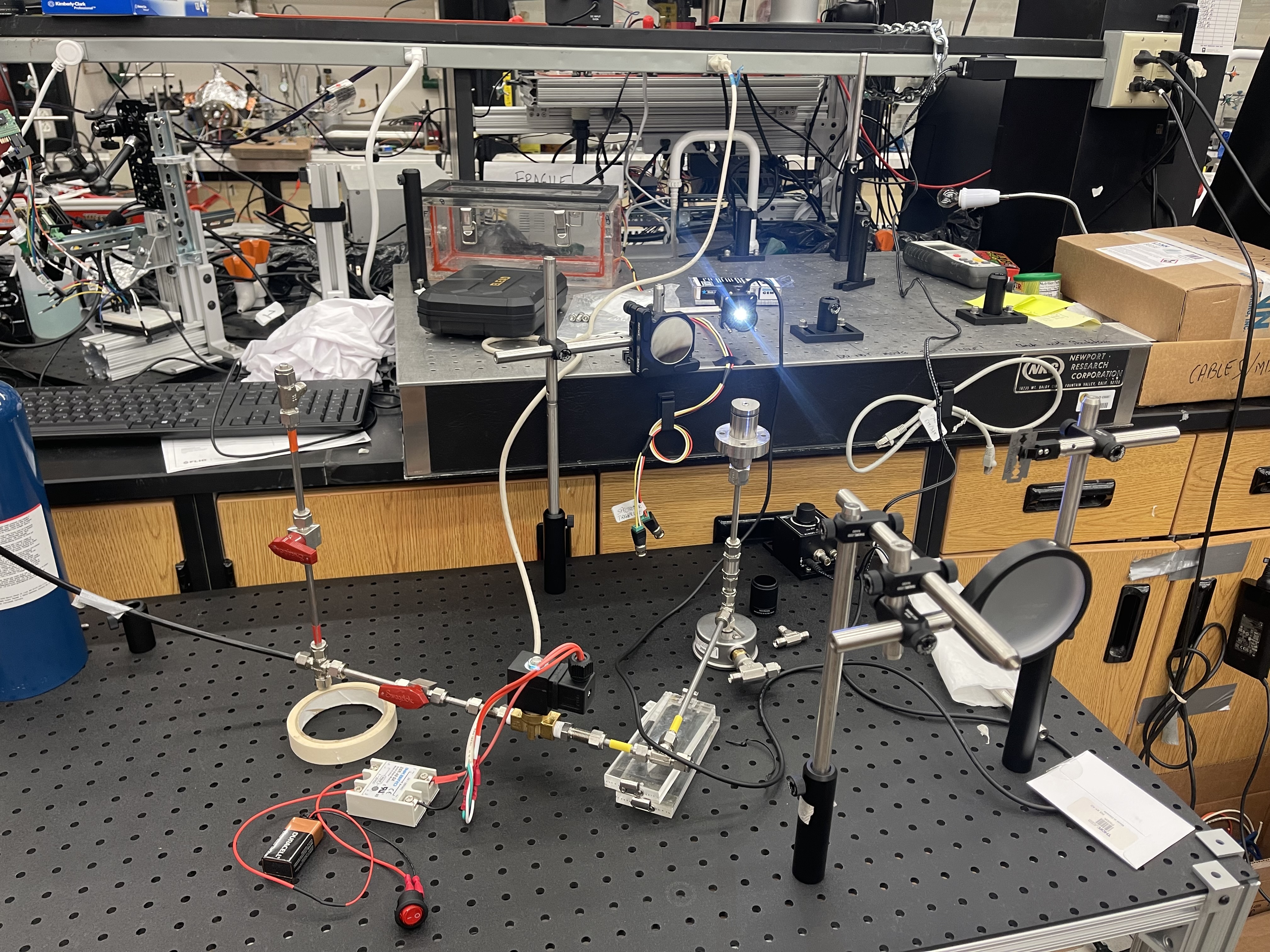
Vasu Lab
The ability to experimentally study shock–jet interactions in constrained test sections is important for understanding a wide range of fluid dynamic phenomena relevant to propulsion and combustion systems. In this work, classic Schlieren imaging was used to visualize jets in crossflow in a stainless-steel shock tube. The optical setup consisted of two concave mirrors, two flat mirrors, a pinhole LED, and a razor blade cutoff, with a high-speed camera capturing flow features such as incident shocks, boundary layers, bow shocks, contact surfaces, and reflected shocks. A synchronized triggering system coordinated jet injection and diaphragm rupture, enabling measurement of shock velocity to within 5% of theoretical predictions. The results demonstrated how oversaturation, window cleanliness, and diaphragm quality influenced image clarity and diagnostic reliability. These findings contribute to best practices for high-speed flow visualization in confined experimental environments.
Through this project, I gained hands-on experience in designing and aligning Schlieren optical systems, operating high-speed cameras, and synchronizing diagnostics with transient shock events. I also developed data analysis skills by extracting quantitative shock velocities from imagery and comparing them with theoretical models. The work strengthened my ability to troubleshoot sensitive experimental setups, balance optical sensitivity with spatial constraints, and communicate technical findings through a first-author AIAA SciTech 2025 paper.
Please refer to the paper to see my full work.